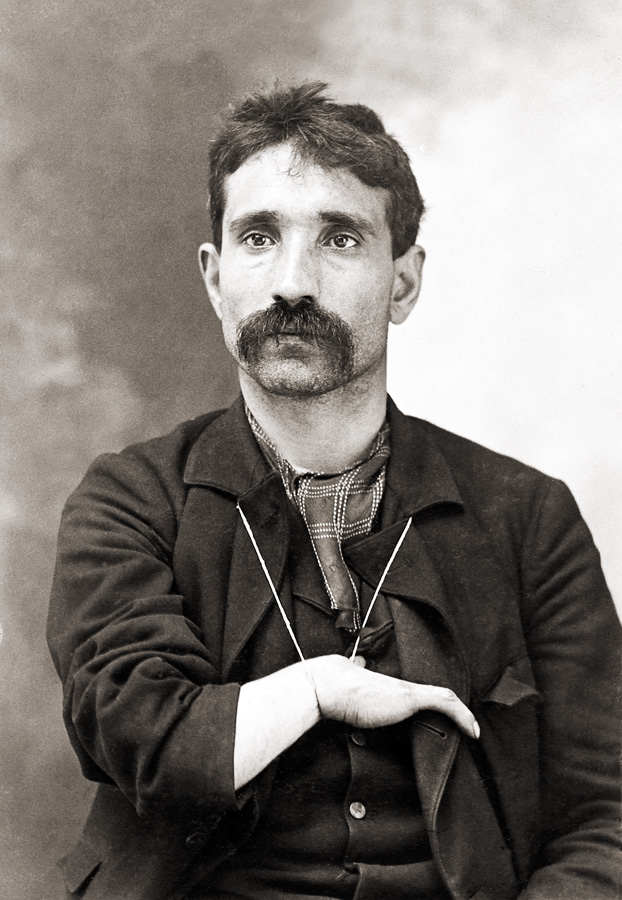
I learned this today. The first account of a crime syndicate that was an American Mafia was published in the New Orleans Times in 1869.
It could be argued that the Mafia started in Italy during the end of the 16th and the start of the 17th centuries. Its vertical structure, with a don at the top, has its roots in the feudal system that existed up until that. By the start of the 19th century, a middle class was starting to emerge in Italy and the Mafia came out of that middle class. The feudal barons sold off their land to private citizens, who became this middle class.
A rising middle class landowners meant there was an increase in the number of disputes that needed to be settled. The government didn’t have the power or the manpower to settle these. Often, they left it up to the feudal lords who used their private armies to settle them. This system clearly evolved into the Mafia.
They exploited the peasants, controlled guilds, and befriended magistrates. These groups of Mafia began to grow and to become entwined with the government and the legal system. In 1838, the Neapolitan Minister of Justice said that many high magistrates protect these brotherhoods.
The Mafia mainly existed in the southern end of Italy and Sicily. Italy annexed Sicily in 1860 during its unification. The Mafia continued to grow and served the people in areas where the government was either too slow, or just couldn’t work. In Italy, the Mafia is generally called Cosa Nostra, which means “our thing”.
Italians and Sicilians started to immigrate into America from the beginning of the 19th century. Italy was going through social upheaval, civil wars, and the movement that would eventually lead to its unification in 1870. There was violence, social chaos, and poverty that many people fled from, hoping to find a more prosperous life in America. By 1880, 300,000 Italians were living in America. This was 600,000 by 1890 and 2 million in 1900. By the end of World War 1, the number of Italians living in America had reached 4 million.
A lot of these people were farmers and laborers and they often lived in Italian areas of cities. With so many Italians entering America, it was inevitable that members of the Mafia would be among them.
Groups of Italian and Sicilian immigrants formed gangs in many of the major American cities. The first record of these gangs was an article in the New Orleans Times in 1869 that said, “well-known and notorious Sicilian murderers, counterfeiters, and burglars … have formed a sort of general co-partnership or stock company…” New Orleans was a major port on the way to Brazil and Argentina, where many more Italians were settling. However, these people may or may not have been connected to the Italian and Sicilian Mafia.
Giuseppe Morello is the first known Mafia member to enter America. He possibly entered in 1892, and his uncle was a member of the Corleonesi Mafia from Sicily. Morello started the 107th Street Mob and slowly grew it into an empire, which he called the Morello family. There were other Mafia groups in New York from Naples and the areas around it. Between 1915 and 1917 the Morello family wiped out all of the non-Sicilian Mafia in New York.
Morello was replaced by Joe Masseria in the early 1920s and this is when the Mafia came into its own. They were involved in gambling and protection and other crimes up until this time, but the introduction of prohibition in 1920 gave them a huge opportunity. The American government banned alcohol from 1920 to 1933. Obviously, people still needed to drink, and the Mafia stepped in to fill that gap. They brought alcohol down from Canada and sold it all over America in illegal speakeasies. They made a fortune, and their power was cemented.
During the prohibition era, the Sicilian Mafia gangs in New York were constantly fighting each other and the Mafia in Sicily realized that it was getting bad for business. They sent Salvatore Maranzano out to take control. He started the Castellammare War in 1930. Joe Masseria was killed by Charles “Lucky” Luciano in 1931, in return for Maranzano’s patronage. Luciano changed the name of the family to the Luciano family and Maranzano organized the New York Sicilian Mafia gangs into the five families that still exist today. Each family was given specific territory and Maranzano made himself the capo di tutti capi (boss of all bosses). Lucky Luciano killed him in 1931.
Luciano was sent to prison, and he was replaced by Vito Genovese, who called his family the Genovese family, and they lay claim to being the oldest Mafia family in America.
Today, the five families in New York are the Maranzano/Bonanno family, the Profaci/Colombo family, the Mangano/Gambino family, the Luciano/Genovese family, and the Gagliano/Lucchese family.
So, the Mafia have existed in Italy and Sicily for hundreds of years. Organized Italian crime was happening at least in the 1860s in America and probably from before as well. Giuseppe Morello was the first Mafia member to come to Japan and could technically be considered the father of the American Mafia. And this is what I learned today.
Photo By Unknown author – La Cosa Nostra Database, https://commons.wikimedia.org/w/index.php?curid=14920001
Sources:
https://www.bbc.com/news/world-europe-42794848
http://websites.umich.edu/~themafia/RevisedHistory.htm
https://www.fbi.gov/investigate/organized-crime/history-of-la-cosa-nostra
https://davidfrum.com/article/cosa-nostra-a-history-of-the-sicilian-mafia
https://en.wikipedia.org/wiki/%27Ndrangheta
https://en.wikipedia.org/wiki/Sicilian_Mafia
https://www.ojp.gov/ncjrs/virtual-library/abstracts/sicilian-mafia-and-its-impact-united-states
https://www.history.com/topics/crime/mafia-in-the-united-states
https://www.history.com/topics/crime/origins-of-the-mafia
https://en.wikipedia.org/wiki/American_Mafia
https://en.wikipedia.org/wiki/Prohibition_in_the_United_States
https://en.wikipedia.org/wiki/Giuseppe_Morello
https://en.wikipedia.org/wiki/Genovese_crime_family
https://en.wikipedia.org/wiki/Vito_Genovese
https://en.wikipedia.org/wiki/The_Commission_(American_Mafia)
https://en.wikipedia.org/wiki/Five_Families
https://www.loc.gov/classroom-materials/immigration/italian/the-great-arrival/
